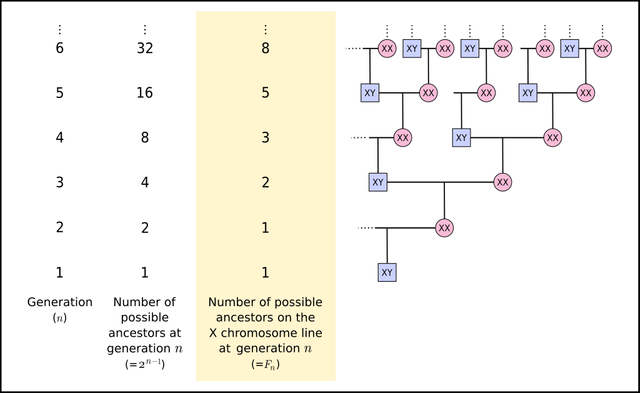Most human cells contain genetic instructions that are tightly packed into structures called chromosomes. A typical human has 23 pairs of these chromosomes. One such pair are the sex-determining chromosomes X and Y. Females usually have two of these Xs in their cells, whereas males have an X and a Y.
The X and Y Chromosomes — Sex Determination and Other Functions
The Y chromosome carries several genes involved in male traits. It’s therefore tempting to assume that the genes that make a person female must be on the X. In fact, most of the genes involved in female traits are on the autosomes, the non-sex chromosomes numbered 1–22.
There are an estimated 700–1400 genes on the X chromosome. Several of these genes are known to be essential for health and development. For example, X chromosome genes are involved in blood cell formation, kidney function and blood clotting.
Inheritance of the X Chromosome
Before chromosomes are passed to the next generation, they go through a process called recombination. This means they swap DNA with the other chromosome in the pair, fixing any mistakes and creating a new copy. For autosomes this recombination is very effective.
It is also effective for a female’s two Xs, as these are similar enough to exchange DNA. A male’s X and Y are not so similar and the way they recombine is less effective. They have some genes in common and these can recombine, and the Y is also able to recombine with itself.
A female passes the recombined X copy to any sons and daughters she has. A male passes his almost unchanged X only to his daughters, and his almost unchanged Y only to his sons. These patterns need to be accounted for when considering how X chromosome-related conditions are inherited.
X-Inactivation — Controlling Gene Dosage
If females have two Xs and males have one, do females end up with a double dose of X chromosome genes? No — females get the same dose of genes due to a mechanism called X-inactivation. Early on in a female embryo’s development, one of the two Xs is rendered mostly inactive in each cell.
The inactivation is random: either the maternal or paternal X can be switched off. Some of a female’s somatic (body) cells will have active maternal Xs whereas others will have active paternal Xs. This is visible in tortoiseshell cats, whose patchy skin colors are caused by color genes on the two X chromosomes.
The X Chromosome and Health Conditions
Issues with chromosome number and structure can result in genetic conditions. Disorders associated with the X chromosome include Turner syndrome, fragile X syndrome and triple X syndrome. Genetic counselors provide advice for those concerned about genetics-related health issues.
Sources
- "X chromosome", Genetics Home Reference https://ghr.nlm.nih.gov/chromosome/X
- "How normal genes work" (p.129) in Human Genetics (2nd ed), Scion Publishing Ltd, authors: Anne Gardner and Teresa Davies.
- "The Blood" (pp.74-75), Anatomy and Physiology (9th ed), Ross and Wilson, authors: Anne Waugh and Alison Grant.
- "Genes, alleles and sources of new inherited variation" (p.91), Genetics, Evolution and Biodiversity (revised ed), Nelson Thornes, authors: John Adds et al.
